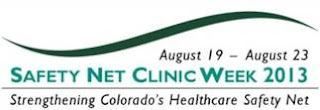Last week, along with many readers of our Special
Delivery, I attended the Colorado Health Foundation’s Symposium. During three full days I was captivated by
the speakers’ insights and re-awakened by the energy of my fellow
attendees. On the way home, three
sentiments stayed with me – inspiration, engagement and change. How can we raise the rural voice to navigate
our future?
Dolly Parton was born and raised in Sevierville,
TN, population 14,807. We’ve learned
that some of the greatest scientists, artists, and general minds have rural
roots. In regards to inspiration, Parton
has said “when I’m inspired, I get excited because I can’t wait to see what
I’ll come up with next.” The phrase is
simple, yet it holds true for all of us.
Whether we’re introverted and gain inspiration internally, or extroverted
and gain inspiration from absorbing the energy of our peers, inspiration causes
excitement. Excitement then leads to
motivation which results in engagement.
Many great minds have commented on the impact of
engagement, including Robert Nozick, a prominent American political philosopher
in the 1970s and 1980s. He stated that
“through the evolutionary process, those who are able to engage in social
cooperation of various sorts do better in survival and reproduction.” His comment is particularly timely because of
the Symposium’s Rebecca Costa, a sociobiologist, who spoke about the keys to success in a world that has out-grown the human brain’s capacity. She uses evolution to illustrate that the
growth of technology is now beyond our immediate understanding and we are in a
period of adaptation. To survive the
next cycle of evolution, we must be able to engage others around us who are
inspired by the same topics – in our case this would be rural healthcare.
The third sentiment that has lingered in my mind
is change and how the rural voice must be raised to engage healthcare leaders,
whether urban or rural. With a
collective voice of advocates, the best ideas will be inspired and motivation
for engagement will follow. Although
Colorado is undoubtedly a leader in healthcare innovation, we can see that
others, even across the world, are engaging in the same thoughts. In 2012 there was an initiative, financially
supported by the United States government that hoped to result in 10,000 new
inventions from rural residents living in India. Many of these inventions have direct correlations
to healthcare and only needed a nudge to bring the inspired creations to our
globalized market through “frugal innovation.”
Included among the products is the refrigerator made out of terracotta
that does not need electricity and a hand pump that purifies water from any
source.
In our own rural backyards we can also discover
actions of engagement. The National
Rural Health Association recently hosted March for Rural Hospitals in Washington
D.C. This event shows the strength of
the rural voice which has been proven to engage congressional leaders in
supporting rural healthcare. Next week
is Safety Net Clinic Week where the work of safety net facilities and providers
will be celebrated throughout Colorado.
The celebrations will be happening all over the state and clinic stories
are sure to inspire any listener. Please
listen and help spread the rural voice.
More information about the events can be found on CRHC’s website.
To close, we must all remember to act upon our
inspirations by telling others and developing new innovation that will lead us
into the next generation of healthcare.
The remarkable inventions, whether organizational, conceptual, systemic,
or simply a new gadget, are what drive progress. Inspire others through your voice and get
engaged by through their inspirations.






